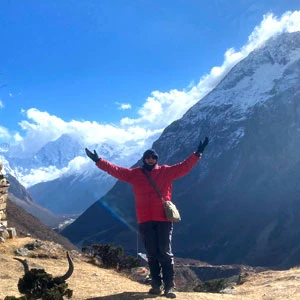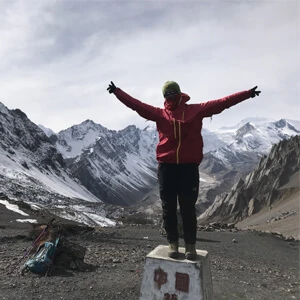17 Days Manaslu Circuit Trek Overview
Manaslu Circuit Trek in Nepal is a 17-day journey through one of the country’s most stunning and secluded regions, the Manaslu trekking region. Located in the Gorkha district, this breathtaking route encircles Mt. Manaslu (8,163 meters), the eighth highest peak in the world, and takes you along the ancient salt trade route that once connected Nepal to Tibet. Later, the trail was officially opened to foreign trekkers in 1991.
This Manaslu region trekking trail offers a raw and authentic Himalayan experience, far from the crowds of more commercial routes. The adventure begins from Machha Khola (710 meters) and ends in Dharapani (1,960 meters), passing through a spectacular range of climatic zones in Manaslu, from lush lowland forests to high-altitude glaciers.
Along the way, you will pass through remote mountain villages such as Jagat, Deng, Namrung, Lho, Shyala, Samagaun, and Samdo, before finally reaching 5,106 meters at the majestic Larkya La Pass. With its rugged terrain, rich history, and ecological diversity, this trekking route in Nepal is perfect if you are seeking an off-the-beaten-path expedition through the heart of the Himalayas.
What Makes The 17 Days Manaslu Circuit Trek Unique?
Pungen Gompa Side Trip
Also known as Pungen Gompa, this spiritual hideaway is one of the most rewarding side trips on the Manaslu Circuit Trek, and massively underappreciated. Perched at around 4,000 meters, this ancient Tibetan monastery mesmerizes you with a front-row seat to raw Himalayan magic.
The trail kicks off from either Shyala or Samagaun, a picturesque village nestled in the heart of the Manaslu region. In just 3 to 4 hours, you will hike past alpine meadows, lush pine forests, and icy blue glacial streams, all while the mighty Mount Manaslu surrounds you. It’s the kind of trek that makes you stop mid-step, not because you are tired, but because your jaw just hit the ground.
As you reach the gompa, you will walk into centuries of Tibetan Buddhist history. Legend says monks fled here for peace, making this sacred spot a spiritual sanctuary for meditation, rituals, and wisdom-keeping. Tucked away in a serene alpine plateau, this underrated spot is a scenic marvel that rivals the views from Manaslu Base Camp itself. The pasture here is open and wide, making it perfect for soaking in uninterrupted mountain vistas without the crowds.
From Pungen Gompa, you will get breathtaking close-up views of Mt. Manaslu, Nadi Peak (Peak 29), Himal Chuli, Ganesh Himal, and stretches of the Kutang Himal range. Also, this detour route is framed by the Ganesh Himal to the east and the towering presence of Mount Manaslu at its core.
Manaslu Base Camp Day Hike
If you are already in Samagaun during your Manaslu Circuit Trek, skipping the Manaslu Base Camp Day Hike is a lost golden opportunity. Witnessing the 8,163-meter Mount Manaslu, the eighth tallest mountain in the world, up close on this side trip is a once-in-a-lifetime, raw, high-altitude adventure.
The name “Manaslu” comes from Sanskrit, meaning “mountain of the spirit.” And trust me, the spirit here is fierce, sacred, and unforgettable. The trail will start gently, weaving past alpine yak pastures, dense Himalayan pine forests, and past shimmering Birendra Lake, before slapping you with a steep grind up switchbacks and glacial moraine. The last push of this hike is quite brutal. You will find loose rocks, sharp winds, and zigzag trails over steep outcrops. But as you near the base camp, you will start to notice the icefalls and glacier formations.
Once you are at the base camp, you will be treated to jaw-dropping views of Mt. Manaslu, Naike Peak, Samdo Peak, and the Pungen Himal range. From here, you will get 360° views of towering Himalayan giants. Standing here, you should keep your camera ready (and your breathing steady), because you might spot blue sheep, Himalayan marmots, lammergeiers, or even snow partridges darting through the rocky wild.
Historically, the Manaslu base camp was a trading route to Tibet and a yak herder’s summer pasture. Today, it's a bucket-list detour for trekkers, climbers, and anyone craving a taste of untouched Himalayan wilderness.
Exploring the Birendra Lake
Tucked just outside Samagaun, Birendra Lake is a pristine glacial lake that sits right under the shadow of the mighty Mount Manaslu (8,163 meters). This side hike is short and sweet, around 3 kilometers, taking 1 to 2.5 hours maximum depending on your pace. The trail winds through pine and fir forests, wraps you in silence, and then as you near the top, you will find a surreal mirror of ice-blue water, reflecting snow-capped peaks and the Manaslu Glacier.
Additionally, this lake is spiritually important as both Hindu and Buddhist pilgrims treat this place as sacred. Locals believe the lake carries the blessings of the mountain gods, and honestly, standing there, surrounded by Naike Peak, Manaslu North, and sweeping glacial valleys, you will get why.
If you are lucky enough and hiking quietly, you might spot Himalayan monals, snow pigeons, marmots, or even blue sheep grazing nearby. It’s an absolute treat for nature lovers, wildlife photographers, or anyone craving a moment of calm in the high Himalayas.
A Day Trip to Tibetan Border (Rui La)
Rui La is a remote, high-altitude side trip that leads you straight to the Tibetan border. It is situated at a staggering 5,000 meters above sea level. You will start this hike from Samdo (3,875 meters), following an ancient salt trade route once traveled by Tibetan merchants and yak caravans.
It is a 6 to 8-hour round-trip hike. Initially, you will begin gently, hugging the Budhi Gandaki River, but don’t get too comfy. The trail will quickly escalate through glacial moraines, rocky alpine terrain, and into a stark, treeless moonscape of scree and ridgelines. It’s raw, rugged, and totally mind-blowing.
When you reach the pass, you will be greeted with 360° views that will knock the breath right out of you (as if the altitude hadn’t already). You will see jaw-dropping panoramas of Kang Guru, Simnang Himal, and the endless stretch of the Tibetan Plateau. You must also keep your eyes peeled for blue sheep, Himalayan marmots, yak herds, and, if you are lucky, you might catch a lammergeier or griffon vulture soaring overhead.
Trekking Over Larkya La Pass (5,106 Meters): Ultimate Destination on the Manaslu Circuit Trek
The Larkya La Pass (5,106 meters) is a beast. It’s the highest point on the Manaslu Circuit Trekking itinerary and easily the most challenging, but it is worth every gasp of air and frozen toe. Your summit push for Larkya La starts well before dawn. Before the sun comes up, you will leave Dharamsala (4,460 meters) under a sky glittering with stars and a glowing moon with the Himalayan backdrop.
The trail begins with a slow, steady climb through glacial moraines, rocky ridgelines, and snow-dusted switchbacks. As you get started on the trail, you will notice the thinning air, brutal winds, and biting cold, especially if you are trekking in early Spring or late Autumn. This is true high-altitude trekking, and it doesn’t hold back.
But here’s the thing: it’s also the most epic, soul-shaking part of the entire Manaslu trekking itinerary. With the right acclimatization, pacing, and support, especially from experienced local guides who live in this terrain, you will make it to the top. Once you are at the top of this pass, you will be rewarded with panoramic views of Mount Manaslu, Himlung Himal, Cheo Himal, Kangguru, and even a slice of the Annapurna range.
Similarly, you will also be surrounded by icefields, glacial lakes, and endless snowy peaks. After soaking in the views, catching your breath, and taking some pictures, you should brace yourself for the steep descent to Bimthang.
Untouched Tibetan Buddhism & Culture
Trekking the Manaslu Circuit takes you deep into a culture preserved through generations. This region is steeped in Tibetan Buddhism, richly blended with Bon traditions, an ancient shamanistic faith rooted in nature, spirits, and energy. And you feel it everywhere, from the mountain air to the mantras carved into stone.
Villages like Samagaun, Lho, and Samdo are like living monasteries. Every settlement here is centered around a gompa (monastery), prayer wheels, and mani walls etched with the sacred mantra "Om Mani Padme Hum". The prayer flags consist of five colors: blue, white, red, green, and yellow strips, and you will often see them fluttering on rooftops, ridgelines, and high passes. Each of its colors represents the five elements, and with every breeze, locals believe those prayers float into the universe, bringing peace and compassion to all beings. And here’s a local code you need to follow: mani walls must be passed clockwise, always.
Moving on, the people of the Manaslu region live by their beliefs. Monasteries in these villages are schools that preserve the Tibetan language, Buddhist philosophy, and intricate rituals. Kids here grow up learning chants, making butter lamps, and spinning prayer wheels.
If you are trekking Manaslu in Winter, you may be able to encounter and partake in Lhosar, the Tibetan New Year. It’s celebrated with mask dances, feasts, chanting, and household rituals to drive out evil and welcome fresh energy. Likewise, if you are trekking in Spring, there’s Saga Dawa, the holiest Buddhist month. It honors Buddha’s birth, enlightenment, and death, which are celebrated with prayers, offerings, and kindness.
Also, if you are trekking in Autumn, you might stumble into Dashain or Tihar celebrations in the lower Manaslu areas. At this time, you will witness families worshipping goddesses, lighting candles, and honoring animals like cows, dogs, and even crows with food and garlands.
All these festival celebrations are filled with songs and chants. Elders pass down folk songs about love, migration, harvests, and spiritual teachings. They are often sung while planting crops or gathered around butter tea. You will also hear mantras like "Om Mani Padme Hum" echo in the valleys, whispered by monks or murmured under breath during treks. Altogether, Manaslu Trekking provides you a front-row seat to a living spiritual tradition.
Pristine Flora & Fauna
The Manaslu Circuit Trek is a journey through one of Nepal’s most ecologically rich conservation zones, the Manaslu Conservation Area. And trust me, nature pulls out all the stops here.
You will start your trek low at around 700 meters, where the landscape greets you with dense subtropical forests. On the initial leg of your journey, you will find towering sal trees, fragrant alder, pine, and massive swaying bamboo groves. As you climb, the scenery transforms. The mid-altitudes are painted with oak, maple, and in Spring, you will witness mesmerizing views of blooming rhododendrons (Nepal’s national flower) and magnolias.
Higher up, you will see clusters of juniper, birch, and hemlock, and if you are trekking Manaslu in late Spring or early Summer, you will find edelweiss, primulas, and delicate blue poppies tucked between alpine rocks. Above 3,500 meters, the tree line drops away, and all you will see are mosses, lichen, and hardy dwarf shrubs.
Likewise, the Manaslu region is home to over 2,000 plant species, spread across 11 distinct forest types. While here, you will get to witness snow leopards, lynx, musk deer, red foxes, jackals, brown bears, blue sheep, Himalayan tahr, woolly hares, and serows. You probably won’t see a snow leopard (unless you are ridiculously lucky), but you might see their footprints on the snow or the ground.
For bird lovers too, the Manaslu trek is an avian paradise with 201 species, including the Himalayan griffon, golden eagle, snow partridge, Tibetan snowcock, and Chukor partridge. Some of these birds glide right over the trail, especially in the higher altitudes around Larkya La Pass.
Add on Side Trips on the Manaslu Circuit Trek
Beyond the main trekking route, there are some of the best side trips on the Manaslu Circuit Trek that will give you off-the-beaten-path detours.
Serang Gompa Visit
Tucked high at 3,100 meters in the peaceful Kyimolung Valley, Serang Gompa is one of the most spiritually immersive side trips on the Manaslu Circuit Trek. Founded over 500 years ago by the revered Tibetan master Chokyi Gyaltsen, this ancient monastery is alive with energy, ritual, and soul, which welcomes both Nepali and foreign travelers with humble meals and accommodation.
You will get there from Bihi village, leaving the main trail. The path will take you past cascading waterfalls, mossy hillsides, alpine rivers, and snowy peaks. When you arrive, Serang Gompa’s three-tiered Tibetan architecture instantly grounds you. Inside, you will find a golden Buddha statue that is surrounded by intricate murals and guardian deities. It’s the kind of place that hushes your mind the second you enter.
While in here, you will find the atmosphere filled with the scent of butter lamps, chanting monks, and fluttering prayer flags. Now, if you are trekking between late Winter and early Spring, you might witness Lhosar (Tibetan New Year), a riot of color, dance, and offerings. There’s also Chotrul Duchen, Guru Rinpoche Day, and Saga Dawa, when monks perform elaborate rituals honoring the Buddha’s birth, enlightenment, and passing.
And the views from Serang are mindblowing. You will witness sweeping panoramas of Ganesh Himal and Siringi Himal. Additionally, you will also see plenty of blue sheep and goral next to the monastery. If you are trekking Manaslu and want to tap into its spiritual core, this is the place.
Kal Tal (Death Lake): Side Trip
Okay, here’s the wild card of your Manaslu Circuit Trek: Kal Tal, also called Kalchhuman Tal. Sitting quietly at 3,600 meters on Lungmang Hill, this glacial lake is the kind of place that gives you goosebumps before you even get there. In Nepali, Kal Tal literally means “Death Lake.” Sounds dramatic? It is. And the locals treat it with deep reverence and caution.
The hike to Kal Tal starts from Prok village (2,380 meters), following a relatively moderate yet rarely-touched trail through rhododendron forests, Himalayan birch, and mossy undergrowth. If you are lucky enough to be trekking in Spring, this side trip turns into a botanical wonderland with clear silhouettes of Ganesh Himal, Himal Chuli, and even Manaslu itself.
The Death Lake sprawls across 22.3 hectares in a perfectly tucked alpine basin. This lake is sacred. Locals believe it’s watched over by a powerful deity, and on Jestha Aunsi (dark moon day), they gather here to perform secretive rituals. You are not allowed to swim, shout, or throw stones here.
There is even a whispered legend that a hidden salt mine lies beneath Kal Tal’s icy surface. Whether you believe it's a myth or not, the feeling of standing there, with clouds curling over the ridge and silence pressing in, it’s something you won’t forget.
Himal Chuli Base Camp Exploration
Tucked above 4,000 meters, the Himal Chuli Base Camp side trip from Lihi village throws you into raw Himalayan wilderness without the crowds, and it's totally worth the climb. The trail kicks off mellow from Samagaun, winding through quiet yak pastures, icy blue glacial streams, and a landscape that slowly shifts from whispering pine to otherworldly moraine.
Here, you are heading toward Himal Chuli (7,893 meters), Nepal’s 18th highest peak. That’s the magic. It's one of the most striking peaks in the Nubri region, and yet barely anyone puts it on their Manaslu list.
Once you reach the base camp, you will stand face-to-face with the entire Himal Chuli massif, plus panoramic bonus views of Ngadi Chuli (Peak 29) and the shadowy outline of Ganesh Himal on the western skyline. There are no tea shops, Wi-Fi, or buzzing groups here. Hence, you will get a chance to soak yourself in stillness while enjoying the views.
Ponkar Lake
After you have just hauled yourself over Larke La Pass, you might feel your legs get jelly and lungs burning. However, you will forget it all as you witness the Ponkar Lake that is located at 4,200 meters like a mirror to the sky. This gem above Bimthang is one of the most underrated side trips on the Manaslu Circuit Trek.
To reach here, you will take a 1.5 to 2 hour detour northeast of Bimthang. You will wind past ancient glacial moraines and crumbling scree slopes. It’s not a brutal climb, but yeah, you will feel the altitude and need steady boots. But once you hit that ridge and look down, you will get mesmerizing views of glass-blue water, ringed by Punskar Himal, Cheo Himal, Himlung Himal, and even Manaslu North.
Now, if you are here in Spring or early Summer, the route to the lakeside consists of meadows exploding with alpine wildflowers that are tiny, colorful, and surreal at this height. Locals here visit Ponkar Lake for Buddhist rituals and seasonal offerings, believing the lake to be a spiritual gateway in the high Himalayas.
Manaslu Circuit Trekking Cost For 2025/2026
The 17 Days Manaslu Trek Cost starts at USD 1,095 per person, offering one of the best-value high-altitude trekking experiences in Nepal. This price includes essential services like trekking permits, accommodation in tea houses, meals (breakfast, lunch, and dinner), a licensed guide, and round-trip transportation by local bus. While this budget-friendly option suits many trekkers, there are flexible upgrades available if you are seeking added comfort or support during the trek.
If you are planning your budget for Manaslu Trek, you must consider adding a porter for extra convenience. Porters typically carry up to 20 kg, which allows you to enjoy the journey without the burden of a heavy backpack. Hiring a porter costs around USD 25 per day, and it is highly recommended, especially if you are a beginner. This extra support can make a significant difference in your endurance, comfort, and overall trekking experience.
Now, the package includes transportation by local bus, which is cost-effective but can be uncomfortable due to long travel hours and unpredictable road conditions. For a smoother experience, you can upgrade to a private jeep with an additional charge. Private jeeps offer more comfort, flexibility, and reliability to your trip. A private jeep to Machha Khola from Kathmandu costs USD 200, and from Dharapani to Kathmandu costs USD 250.
Trekking in Manaslu, Nepal is a demanding yet deeply rewarding journey that requires physical preparedness, proper gear, and expert guidance. Given the region’s remote nature, high altitudes, and restricted status, it is crucial to plan your trek through a registered trekking agency like Nepal Trekking Experts (NTE). Our team ensures your safety, comfort, and compliance with all regulations. Whether you are managing your Manaslu Circuit Trek cost on a budget or seeking customized upgrades, we will help you plan your budget efficiently.
Manaslu Circuit Trek Solo Vs. Group Joining
So, can you trek the Manaslu Circuit solo? Well, no, you can't. Since Manaslu is a restricted trekking area in Nepal, you must have at least two trekkers and a licensed local guide to get your Manaslu trekking permits.
But here’s the twist: you can trek "solo" with just a guide. In this case, “solo” means you are trekking privately, without joining a group. To make it work legally, you will need to purchase a ghost permit, which is basically paying for a second, non-existent trekker. It’s totally legal, but yes, it does increase your Manaslu Circuit Trek cost.
NTE (Nepal Trekking Experts) has been organizing private Manaslu treks like this for over a decade. We handle the logistics, permits, and all the bureaucratic acrobatics so you can simply enjoy your holiday, exploring the lesser-known gems and untouched beauty of the Manaslu Circuit Trail.
On the flip side, if you are looking to keep things budget-friendly, a group trek to Manaslu is the way to go. You will share major costs like guide, porter, and private transportation; hence, it is perfect for solo travelers, couples, or friends on a tighter budget.
Manaslu Circuit Trekking In December 2025: Post Season Trek
Manaslu Circuit Trekking in December is not only doable but also incredibly scenic and peaceful. Although December marks the beginning of Winter, it still offers clear skies, crisp mountain views, and cool, dry weather, which is ideal for a quiet and rewarding Himalayan adventure. The trails are far less crowded, and the visibility of peaks like Manaslu, Himalchuli, and Ganesh Himal is often at its best.
While temperatures drop significantly, especially near Larkya La Pass, days are still sunny and comfortable for trekking. With proper gear and guidance from local authorised agencies like NTE, the trek is safe and enjoyable. If you are looking for a serene off-season experience with stunning Winter landscapes, Manaslu Circuit Trek in December is a perfect choice. You can start planning your Manaslu Circuit Trek for December 2025 now. Get in touch with us to customize your Winter journey with expert local support.
Alternate Routes For Manaslu Circuit Trekking In Nepal
While the classic 17-day Manaslu Circuit is a favorite, there are plenty of alternate trekking routes in the Manaslu region of Nepal to suit different preferences, timeframes, and fitness levels. If you want to explore deeper into Manaslu region, you can extend your journey into remote and sacred valleys through options like the Manaslu Circuit Tsum Valley Trek.
On the other hand, if you are short on time, the Short Manaslu Circuit Trek offers a condensed version of the trail without compromising the essential experiences. Lastly, if you have lower fitness levels or a special interest in cultural immersion, the Lower Manaslu Trek is a perfect alternative. It will guide you through traditional villages like Barpak and Laprak which are known for their rich Gurung heritage and welcoming homestays.
Altogether, there are several treks within the Manaslu region that go beyond the standard route, so you must explore our full range of trekking packages. The choices are yours, but whichever option you choose the staff at Nepal Trekking Experts are standing by to give you all the assistance necessary to get you on the path to Manaslu – it’s home territory for most of them and we take great pride in showing off the area to the best of our abilities.




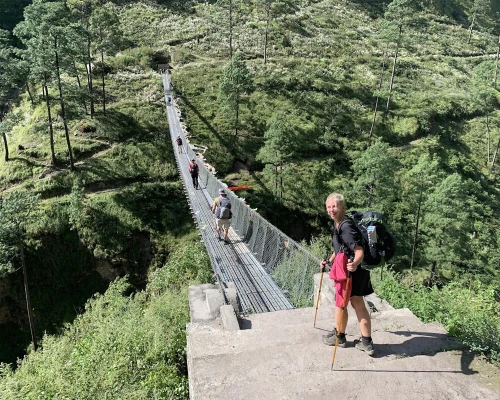

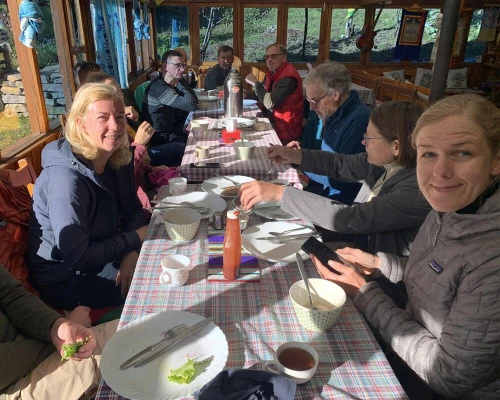
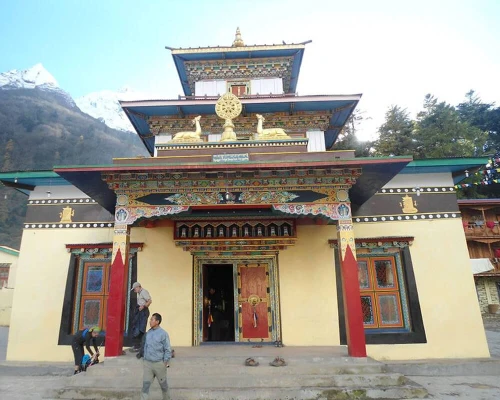
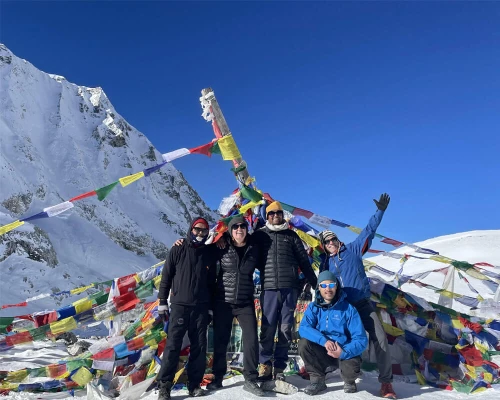
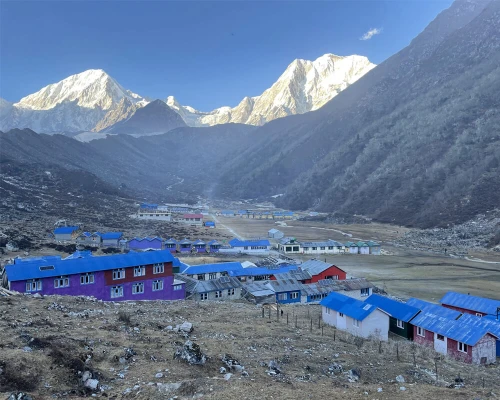
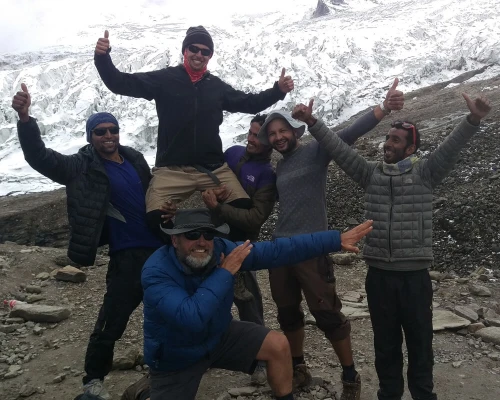

 based on 43 reviews
based on 43 reviews





